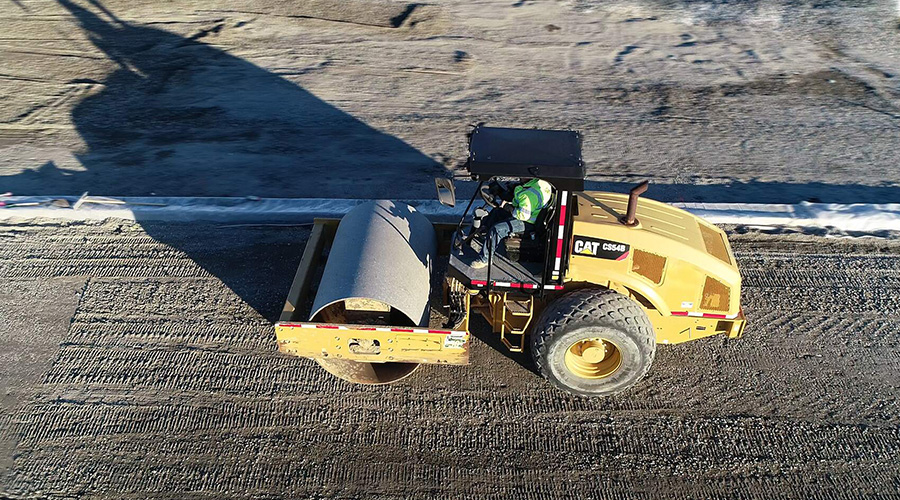Spring into Mowing
Equipment inspection and maintenance at this time of year can set the stage for a successful summer mowing program
Grounds care managers know that spending a little extra time on preparation and planning at the front end of a project can save a significant amount of time and money during project implementation. This adage holds true for the challenging project of grounds care, especially the often-overwhelming task of mowing.
Preparing lawn-mowing equipment for the rigorous spring schedule can help to ensure that the spring rush and continuing season proceeds efficiently.
Starting Points
First and foremost, mower maintenance should be based on the program outlined in each mower owner’s manual. All mowers makes and models are different, and the owner’s manual for each piece of equipment should be used as the minimum standard for upkeep. If mechanics and operators fail to follow the program outlined in the manual, the equipment warranty might not remain effective.
Prior to filling the fuel tank and taking off for the first time, all equipment should be thoroughly inspected, and a mechanic or qualified staff member should complete annual maintenance procedures.
Today’s mowing equipment can be very sophisticated, especially some of the newer mowers with fuel injection and the four-stroke engines found on the smaller equipment. If a staff mechanic is not available, managers might consider outsourcing this work to a reputable service center.
Be sure to inspect all safety features to make sure they are in working order. Do not allow operators to override or modify safety devices. Safety should never be compromised for efficiency. One accident can quickly negate all of the positive aspects of saving a few minutes each day.
Many routine maintenance activities are based on equipment usage. For example, the owner’s manual might suggest changing oil and filters after every 100 hours of use. If the mowers are not already equipped with hour meters, now is an opportune time to install them. Hour meters can more accurately track equipment use and keep maintenance activities on schedule.
Hour meters are especially handy on equipment that might not be used daily or on equipment that is used by several different operators. Staying on task with routine maintenance during the season will greatly improve the life expectancy of equipment, as well as reduce downtime due to minor repairs or break downs.
During the annual maintenance, the mechanic should check hour meters and complete scheduled repairs. If the hours are just short of the recommended time to complete a task such as hydraulic oil and filter change, the change should be completed during the scheduled preseason maintenance. This will eliminate taking the machine out of commission during the height of the mowing season.
Mechanics and operators should err on the conservative side and take care of repairs when potential problems are first noticed. Don’t wait until the machine breaks down or can’t function without repairs.
Repairs are more easily completed when the equipment is already in the shop and not it the field. Eliminating untimely repairs will improve overall efficiency, reduce employee frustration and down time.
Setting Schedules
Managers should set up routine equipment maintenance schedules before mowing operations hit full stride. Mechanics should document their daily, weekly and monthly maintenance activities and communicate them to the operators. Activities should be delegated to staff persons. Daily activities are most efficient if done by the operator at the end or beginning of each day. Weekly activities also can be completed by the operator. Monthly activities might need to be done by a trained mechanic. For a list of daily, weekly and monthly tasks, see the accompanying article on this page.
When setting up routine activities group like activities together. For example: always change oil and filter at the same time. The owner’s manual might suggest changing oil after 100 hours and the filter after 200 hours, but it is more cost effective to change them both at the same time, after 100 hours. Filters are inexpensive, there is fewer tasks to keep track of, and no questions arise over whether this is the month to change the filter. Again, managers should err on the conservative side in order to save time and money in the long run.
Plan for Productivity
Early spring also is the time to look for other ways to streamline mowing activities. While managers should always use the owner’s manual as a guide, they might be able to find more economical ways to achieve the desired results.
One idea is changing the pre-cleaner of the air filter instead of washing it with soap and water as the manual might suggest. The cost of the new pre-cleaner is most likely to be less than the cost to have the mechanic remove the current one, wash and relubricate it and put it back on.
Early spring also is the best time to buy parts and tools so they are available when needed during the season. Managers or their staffs should review records and make a list of all parts that are used, as well as when the parts might be needed. Knowing what parts and anticipating when they will be needed will save time and money down the line.
Overnight delivery charges and downtime due to parts unavailability can be costly and are easily avoided. Also, on frequently used products such as oil and filters, discounts are available for volume orders.
Parts and tools that are commonly used to make minor repairs by the operator should be made available to them at all times. Set up a tool box on the truck or trailer and stock it with frequently needed items. There is no reason that minor repairs can’t be made in the field. Many hours could be wasted if a machine must be brought back to the shop for a five-minute fix.
Training Tips
One final activity that managers should not overlook before the mowing season is operator training. Whether the operator is new on the job or an experienced veteran, they should receive training about proper operating procedure at the beginning of each mowing season.
The training should cover safety issues, as well any required maintenance activities for which the operator is responsible.
Preseason planning can result in increased efficiency and cost savings: Equipment is in top condition, a plan for keeping it that way is in place, procedures for streamlining routine and unexpected maintenance are set, and operators are trained and ready to go.
Mower Maintenance Gameplan
Typical inspection and annual maintenance for mowers and tractors should include the following actions:
-
Thoroughly clean all equipment and accessories.
-
Change oil and fuel filters.
-
Change spark plugs.
-
Change hydraulic fluid and filters.
-
Flush radiator, clean and refill.
-
Grease.
-
Replace worn parts.
-
Complete any necessary welding, realignment and recalibrating.
-
Check battery for corrosion, fluid level, charge battery.
-
Inspect pull ropes, electrical connections and wires.
-
Check spindles, nuts, bolts, and linkage.
-
Touch up paint.
-
Check tires for wear and pressure.
-
Sharpen and level blades, and have several sets of blades ready to go.
To support annual maintenance activities, managers and staffs also must pay attention to routine maintenance, including these tasks:
-
Change blades when grass is tall and wet.
-
Clean mower deck.
-
Check tires.
-
Check fluid levels.
-
Grease all non-sealed fittings.
-
Thoroughly clean mower decks.
-
Check fluids, gear oil and hydraulic oil.
-
Check for loose or worn parts.
-
Sharpen all blades
-
Change the oil and filters.
-
Inspect machine thoroughly
-
Change the air filter and the pre-cleaner.
Daily:
Weekly:
Monthly:
|
Related Topics:











